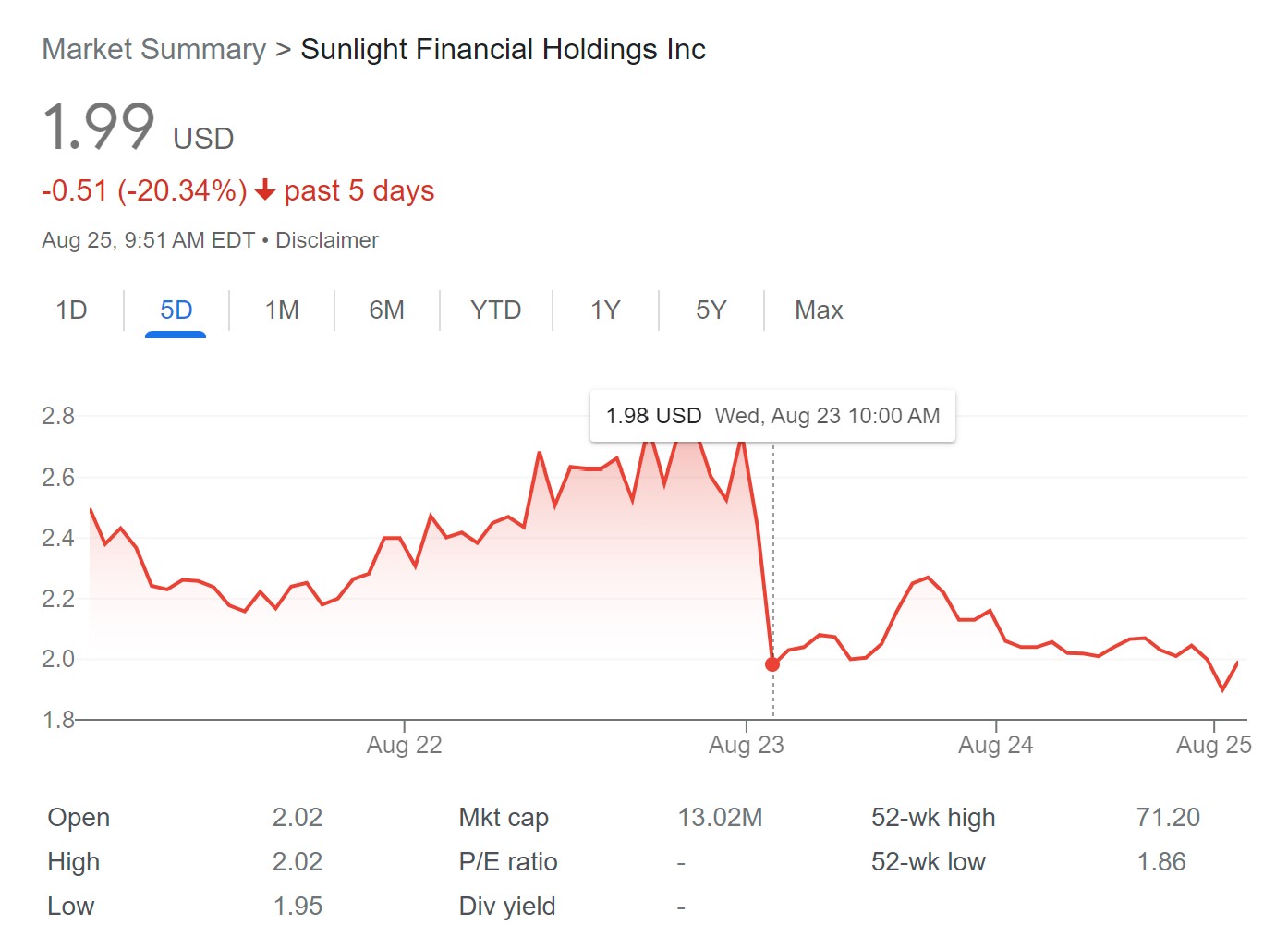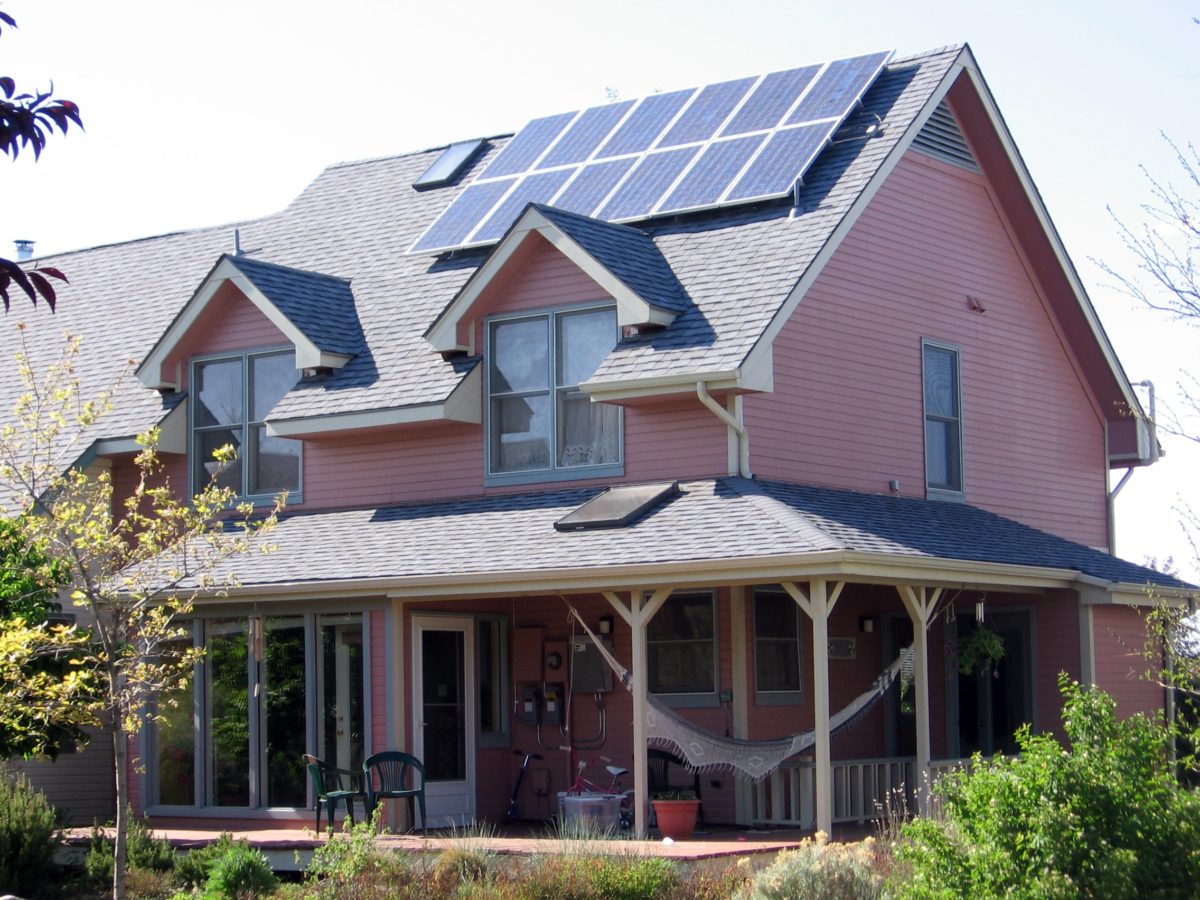Sunlight Financial released an 8-K on August 23, 2023, indicating it had performed a 10:1 and 25:1 reverse stock split on their Class A and Class C shares, respectively. The effective 20:1 reverse stock split became active on the trading day of August 23rd.
According to the New York Stock Exchange regulations, a company risks delisting if its shares trade below $1 for more than thirty days. If a stock goes below $1/share and is delisted, many prominent investors either won’t or cannot invest, which can drive negative business spirals. For several months, Sunlight Financial’s stock had been trading below the $1 mark and, following the announcement of $550 million in underwater solar loans, plummeted to just over $0.10/share.

In anticipation of the 20:1 reverse split, the share price started to bubble up, reaching nearly $2.80/share the day before. It subsequently dipped to approximately $2/share, mirroring the pre-split $0.10/share valuation.
Ken Beiser, a reader of pv magazine USA from StarkPoint Capital Advisors, comments:
Splits are of no economic consequence for a firm in this situation, they neither add nor subtract value. However, stock exchanges require minimum share prices to continue a listing. I expect that is why we saw this action.
Beiser clarified that neither he nor his firm have any stakes in Sunlight Financial.
As previously highlighted by Ohm Analytics, segments of the residential solar market are grappling with financial difficulties stemming from rising interest rates. The boom in residential solar growth over the prior several years was partially powered by federal interest rates near zero for an extended duration. This environment enabled companies like Sunlight to propose long-term deals to homeowners, providing both ownership and electricity savings with no upfront costs.
Furthermore, Sunlight’s financial product structure considered the cash flow necessities of smaller solar firms, ensuring they could manage their payroll even before the completion of solar projects.
These broad financial strains have caused some solar businesses to shutter, while others have ventured into new territories. Nationally, the sunset of California’s net metering 2.0 may act as the silver lining, preserving a positive growth rate for the year. However, except for a handful of specific residential markets, the country is on track for a decline in residential solar growth in 2023.
This content is protected by copyright and may not be reused. If you want to cooperate with us and would like to reuse some of our content, please contact: editors@pv-magazine.com.









By submitting this form you agree to pv magazine using your data for the purposes of publishing your comment.
Your personal data will only be disclosed or otherwise transmitted to third parties for the purposes of spam filtering or if this is necessary for technical maintenance of the website. Any other transfer to third parties will not take place unless this is justified on the basis of applicable data protection regulations or if pv magazine is legally obliged to do so.
You may revoke this consent at any time with effect for the future, in which case your personal data will be deleted immediately. Otherwise, your data will be deleted if pv magazine has processed your request or the purpose of data storage is fulfilled.
Further information on data privacy can be found in our Data Protection Policy.